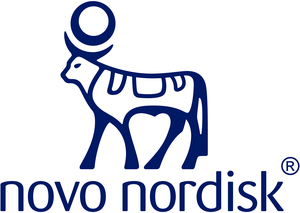
Novo Nordisk's Wegovy® (semaglutide 2.4 mg) was associated with liver health-related benefits not solely based on weight loss in adult patients with MASH with liver scarring, according to a new post hoc analysis
- Secondary analyses of the ESSENCE trial were presented at the American Association for the Study of Liver Diseases (AASLD), The Liver Meeting® 2025
- Across a spectrum of weight loss thresholds, a post hoc analysis showed Wegovy® (semaglutide 2.4 mg) injection was associated with resolution in liver injury, while improvements in liver scarring trended to favor semaglutide 2.4 mg1
- An additional secondary analysis found that semaglutide 2.4 mg, when compared to placebo, showed improvements in both liver injury and in liver scarring across various ages, genders, races, and ethnicities2
BAGSVÆRD, Denmark & PLAINSBORO, N.J., Nov. 10, 2025 /PRNewswire/ -- Novo Nordisk today presented data at the 76th annual American Association for the Study of Liver Diseases (AASLD) meeting, The Liver Meeting® 2025, in Washington, D.C., evaluating the effects of semaglutide 2.4 mg in people with metabolic dysfunction-associated steatohepatitis (MASH) and moderate-to-advanced liver scarring (fibrosis). Results from a post hoc analysis of the ESSENCE phase 3 trial showed semaglutide 2.4 mg was associated with reduction in liver injury (steatohepatitis) in adults with MASH even at low levels of weight loss.1
"These data suggest that the effects of semaglutide 2.4 mg in this study may not be solely dependent on weight loss and provide important insights into the clinical effects of semaglutide 2.4 mg in people living with MASH," said Professor Philip Newsome, MBChB, PhD, co-chief investigator and director of Roger Williams Institute of Liver Studies, King's College Hospital and King's College London. "These data add new layers to our understanding of MASH, which is often accompanied by other systemic conditions, including cardiometabolic disorders."
This post hoc analysis of the ESSENCE trial evaluated the first 800 randomized patients at 72 weeks. Histological and non-invasive testing (NIT)–related treatment responses were evaluated according to specific weight loss thresholds (≤2%, ≤5%, ≤7%, >7%).1 Steatohepatitis-related NITs improved in all groups receiving semaglutide 2.4 mg, with the greatest treatment effect observed for alanine aminotransaminase (ALT) in patients with weight loss of ≤7%. In this subgroup, patients receiving semaglutide 2.4 mg showed a greater mean absolute change in ALT from baseline to Week 72 when compared to those receiving placebo (ETR* 0.75, 95% CI 0.68, 0.82).1,3
For histological endpoints, semaglutide 2.4 mg, when compared to placebo, was associated with resolution in liver injury across a spectrum of weight loss thresholds, including low levels of weight loss (≤2%). In this subgroup, 48.4% of patients receiving semaglutide 2.4 mg showed improvement in the resolution of the liver injury endpoint compared to 25.8% of patients receiving placebo (EDP* 21.7, 95% CI 4.9, 38.4). Results from the improvement in liver scarring endpoint trended to favor semaglutide 2.4 mg across weight thresholds when compared to placebo, with an improvement in liver scarring observed in 27.2% of patients receiving semaglutide 2.4 mg versus in 18.3% of those receiving placebo within the ≤2% subgroup (EDP* 8.3, 95% CI -6.1, 22.9).3
"MASH impacts over 250 million people worldwide and can progress to irreversible liver scarring and liver failure," said Martin Holst Lange, chief scientific officer and executive vice president of Research & Development at Novo Nordisk. "Today's results suggest that even at low levels of weight loss, people with MASH receiving semaglutide 2.4 mg had greater improvements in liver health parameters than those receiving placebo."
An additional secondary analysis of ESSENCE looked at the first 800 randomized patients by race (Asian vs. non-Asian), ethnicity (Hispanic or Latino vs. non-Hispanic or Latino), gender (male vs. female), and age (<45, ≥45-64, and ≥65 years). Results showed efficacy for the combined endpoint of resolution of liver injury and improvement in liver scarring and for liver scarring-related NITs with semaglutide 2.4 mg versus placebo for all gender, race, and certain ethnicity subgroups. These results for semaglutide 2.4 mg were observed across all age subgroups.2
Exploratory secondary analyses are hypothesis generating, and further work investigating the clinical validity of these results would be of value.
Part 2 of the ESSENCE trial will continue with expected readout in 2029.4
*ETR = estimated treatment ratio; EDP = estimated difference in responder proportions
†F: Fibrosis stage; (F0–F1: no or mild fibrosis; F2: significant fibrosis; F3–4: advanced fibrosis)
About the ESSENCE trial
ESSENCE is an ongoing phase 3 trial evaluating the effect of once-weekly subcutaneous semaglutide 2.4 mg in adults with MASH with moderate-to-advanced liver fibrosis (stage F2 or F3†). It is a two-part trial in which 1,197 planned participants were randomized 2:1 to receive semaglutide 2.4 mg or placebo, on top of standard of care, for 240 weeks.5
In part 1, the objective was to demonstrate that treatment with semaglutide 2.4 mg improves liver histology at 72 weeks compared with placebo, based on biopsy sampling from the first 800 randomized patients. In part 2, which is ongoing, the primary objective is to demonstrate that treatment with semaglutide 2.4 mg lowers the risk of liver-related clinical events compared to placebo in adults with MASH and moderate-to-advanced liver fibrosis at 240 weeks.6
About metabolic dysfunction-associated steatohepatitis ( MASH)
MASH is a serious, progressive, metabolic disease affecting the liver, which can be fatal if not managed properly.7 More than 250 million people live with MASH,8 and the number of individuals in advanced stages of the disease is expected to increase over 160% from 2015 to 2030.9 Of those living with overweight or obesity, more than one in three also have MASH.10 And of those currently living with MASH, more than 40% have type 2 diabetes, and more than 8 in 10 also live with obesity.11 People living with MASH often have many other health-related comorbidities,12 such as cardiovascular disease, which is the leading cause of death in people with MASH.13,14
MASH is largely a silent disease due to few and unspecific symptoms in its early stages,7 where nearly 90% of people with MASH remain undiagnosed.15 Once MASH progresses to late stages, there is increased mortality and morbidity, including potential for cirrhosis, liver cancer, and need for liver transplant.16
About semaglutide 2.4 mg in metabolic dysfunction-associated steatohepatitis (MASH)
Semaglutide 2.4 mg is a glucagon-like peptide-1 receptor agonist (GLP-1 RA) FDA-approved under accelerated approval to treat adults with MASH with moderate-to-advanced liver scarring (fibrosis), but not with cirrhosis of the liver, in conjunction with a reduced calorie diet and increased physical activity.17 This accelerated approval is based on improvement of MASH and liver scarring (fibrosis).17 Continued approval for this indication may be contingent upon the verification and description of clinical benefit in a confirmatory trial.17 Novo Nordisk is investigating semaglutide 2.4 mg in the ongoing ESSENCE phase 3 trial, evaluating the effect of once-weekly subcutaneous semaglutide 2.4 mg in adults with MASH with moderate-to-advanced liver scarring (fibrosis) (stage F2 or F3†).6
It is important to note that semaglutide 2.4 mg injection has a Boxed Warning for possible thyroid tumors, including cancer, and should not be used in those with a personal or family history of medullary thyroid carcinoma (MTC) or multiple endocrine neoplasia type 2 (MEN 2). The most common side effects of semaglutide 2.4 mg include nausea, diarrhea, vomiting, constipation, stomach (abdomen) pain, headache, tiredness (fatigue), upset stomach, dizziness, feeling bloated, belching, low blood sugar in people with type 2 diabetes, gas, stomach flu, heartburn, and runny nose or sore throat.17
About Novo Nordisk
| Novo Nordisk is a leading global healthcare company with a heritage of more than 100 years in diabetes care. Building on this foundation, our purpose is to drive change to defeat serious chronic diseases — from diabetes and obesity to rare blood and endocrine disorders — by pioneering scientific breakthroughs, expanding access to medicines, and working to prevent and ultimately cure disease. We are committed to long-term, responsible business practices that deliver financial, social and environmental value. Headquartered in Denmark and operating in around 80 countries, Novo Nordisk employs approximately 78,500 people and markets products in roughly 170 countries. In the United States, Novo Nordisk has a 40-year presence, is headquartered in New Jersey and employs over 10,000 people across more than 10 manufacturing, R&D and corporate locations in eight states plus Washington, D.C. For more information, visit novonordisk.com and novonordisk-us.com, and follow us on Facebook, Instagram, X, LinkedIn and YouTube. |
Contacts for further information
| Media: |
|
| Ambre James-Brown |
Liz Skrbkova (US) |
| Investors: |
|
| Jacob Martin Wiborg Rode |
Sina Meyer +45 3079 6656 |
| Max Ung +45 3077 6414 |
Christoffer Sho Togo Tullin +45 3079 1471 |
| Alex Bruce +45 34 44 26 13 |
Frederik Taylor Pitter +1 609 613 0568 |
| |
|
References
| 1. |
Newsome PN, Armstrong MJ, Bakulin I, et al. Weight-dependent and independent effects of semaglutide in participants with MASH: secondary analysis of the phase 3 ESSENCE trial. Presented at the American Association for the Study of Liver Diseases (AASLD) 2025 annual meeting. 10 November 2025, Washington, DC, US. |
| 2. |
Rinella ME, Abdelmalek MF, Bugianesi E, et al. Efficacy response in subgroups of participants in ESSENCE demonstrate that semaglutide is effective in improving liver fibrosis across a diverse population. [Abstract details]. American Association for the Study of Liver Diseases (AASLD) 2025 annual meeting. 10 November 2025, Washington, DC, US. |
| 3. |
Newsome PN, Armstrong MJ, Bakulin I, et al. Weight-dependent and independent effects of semaglutide in participants with mash: secondary analysis of the phase 3 essence trial. [Abstract details]. American Association for the Study of Liver Diseases (AASLD) 2025 annual meeting. 7-11 November 2025, Washington, DC, US. |
| 4. |
ClinicalTrials.gov. Research study on whether semaglutide works in people with non-alcoholic steatohepatitis (NASH). https://clinicaltrials.gov/ct2/show/NCT04822181. Accessed November 6, 2025. |
| 5. |
Sanyal AJ, Newsome PN, Kliers I, et al. Phase 3 trial of semaglutide in metabolic dysfunction-associated steatohepatitis. New Eng J Med. 2025;392(21): 2089-2099. |
| 6. |
Newsome PN, Sanyal AJ, Engebretsen KA, et al. Semaglutide 2.4 mg in participants with metabolic dysfunction-associated steatohepatitis: baseline characteristics and design of the phase 3 ESSENCE trial. Aliment Pharmacol Ther. 2024;60(11-12):1525-1533. |
| 7. |
Allen AM, Charlton M, Cusi K, et al. Guideline-based management of metabolic dysfunction-associated steatotic liver disease in the primary care setting. Postgrad Med. 2024;136(3):229-245. |
| 8. |
Younossi ZM, Golabi P, Paik JM, Henry A, Van Dongen C, Henry L. The global epidemiology of nonalcoholic fatty liver disease (NAFLD) and nonalcoholic steatohepatitis (NASH): a systematic review. Hepatology. 2023;77(4):1335-1347. |
| 9. |
Estes C, Razavi H, Loomba R, Younossi Z, Sanyal AJ. Modeling the epidemic of nonalcoholic fatty liver disease demonstrates an exponential increase in burden of disease. Hepatology. 2018; 67(1):123-133. |
| 10. |
Quek J, Chan KE, Wong ZY, et al. Global prevalence of non-alcoholic fatty liver disease and non-alcoholic steatohepatitis in the overweight and obese population: a systematic review and meta-analysis. Lancet Gastroenterol Hepatol. 2023;8(1):20-30. |
| 11. |
Miao L, Targher G, Byrne CD, Cao Y-Y, Zheng M-H. Current status and future trends of the global burden of MASLD. Trends Endocrinol Metab. 2024;35:697-707. |
| 12. |
Muthiah MD, Cheng Han N, Sanyal AJ. A clinical overview of non-alcoholic fatty liver disease: a guide to diagnosis, the clinical features, and complications—What the non-specialist needs to know. Diabetes Obes Metab. 2022;24 (Suppl 2:3-14). |
| 13. |
Vanni E, Marengo A, Mezzabotta L, Bugianesi E. Systemic complications of nonalcoholic fatty liver disease: when the liver is not an innocent bystander. Semin Liver Dis. 2015;35(3):236-249. |
| 14. |
Schattenberg JM, Lazarus JV, Newsome, PN et al. Disease burden and economic impact of diagnosed non-alcoholic steatohepatitis in five European countries in 2018: a cost-of-illness analysis. Liver Int. 2021;41(6):1227-1242. |
| 15. |
Ekstedt M, Hagström H, Nasr P, et al. Fibrosis stage is the strongest predictor for disease-specific mortality in NAFLD after up to 33 years of follow-up. Hepatology. 2015;61(5):1547-1554. |
| 16. |
Kugelmas M, Noureddin M, Gunn N, et al. The use of current knowledge and non-invasive testing modalities for predicting at-risk non-alcoholic steatohepatitis and assessing fibrosis. Liver Int. 2023;43(5):964-974. |
| 17. |
Wegovy® [package insert]. Plainsboro, NJ: Novo Nordisk Inc. |
© 2025 Novo Nordisk All rights reserved. US25SN00836 November 2025
Logo - https://mma.prnewswire.com/media/466582/Novo_Nordisk_Logo.jpg







Share this article